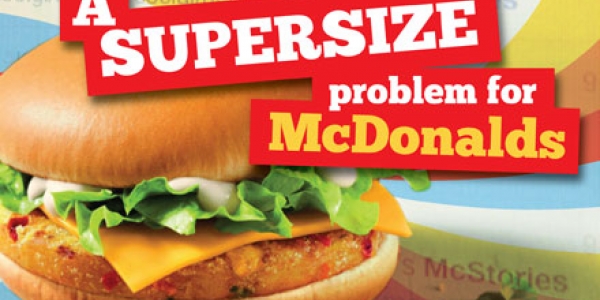A supersize problem for McDonalds…

A brief look at what happened when McDonalds invited followers to talk about their experiences with its food on Twitter and what can be learnt from the crisis management that followed.
We often get asked about the relevance of Twitter by new and existing clients, keen not to be left behind in any aspect of social media but not exactly sure what they should or shouldn’t be doing.
My thoughts on Twitter are pretty similar to my thoughts on all forms of social media per se: Be aware of it and make sure you have an understanding of how it can benefit you but don’t use it as an add-on just for the sake of it. It can do more harm than good to your brand to toy with the different social media offerings and use them incorrectly. As far as Twitter goes, use it to tell people something in the interest of spreading a message but don’t use it to start a conversation.
Think McDonalds back in January. (Actually what were they thinking? I mean really, what were they thinking?). Its social media drive had been planned to spread good news and positive messages but, instead, was infiltrated by unhappy customers describing dining hell at the hands of the fast food giant.
This particular Twitter campaign asked for ♯ McStories and ♯Meet The Farmer tweets but by encouraging people to ‘share’ and tell their stories, McDonalds got far more than it bargained for with vitriolic stories including accusations of food making customers sick, pig meat served from ‘gestation crates’ (I don’t know about you, but I don’t want to know about that one !) and a burger containing a finger nail.
Rick Wion, social media director for McDonalds, pragmatically acknowledged that, when a media campaign is created, it’s ‘inevitable that detractors will chime in’. Social media managers across the land breathed a collective sigh of relief, recognising the ‘there but for the grace of God go I’ element to the debacle, however there were lessons there to be learnt.
For me, the key to recovery was in the speed of the response. McDonalds had stopped using the offending hashtag within an hour and were open in their comments on the ‘brand-jacking’, ruefully holding up their hands on not having seen that one coming. And it doesn’t seem to have affected business.
However, take note: The speed and ease at which McDonalds responded and the unruffled response that was forthcoming smacks to me of a highly professional operation with a slick marketing engine silently rolling into place to carry out the necessary repair job. It takes some effort to appear that cool !
If you don’t think your response would be as apparently smooth and effortless as McDonalds, the first rule is don’t make the same mistake. Remember, not all of your customers are brand ambassadors.
And understand the various social media. Yes social media allows you to engage with your customers but, by inviting them to enter into a conversation with you, you relinquish control because there is no edit button on their responses. You have to make an educated decision: On the one hand, if there is a minimum level of negative comments, you can be seen to be dealing with them openly and positively. On the other hand, should your Twitter feed open the floodgates and it is not carefully monitored, you’ll have no choice but to take it down.
After all, if a huge conglomerate can get it so wrong, what hope do we mere mortals have?
